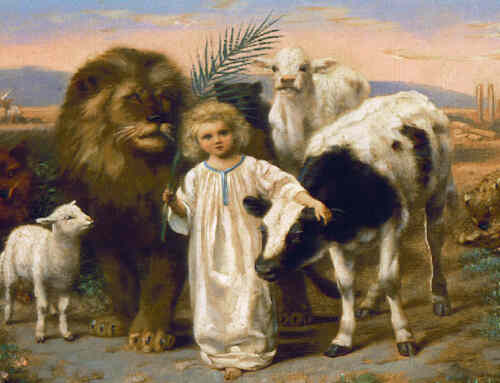The phrase “bottomless pit” is found seven times in the Bible, all in the book of Revelation. Revelation is a highly symbolic text. Over the centuries, much confusion has arisen from taking its writings literally. The “bottomless pit,” for example, is not a literal place, but rather a symbolic picture. Different interpretations of biblical symbols like this one exist; however, one suggested interpretation is that a “bottomless pit” represents oblivion. Oblivion is not a place; it is the state of nothingness. There is no time or awareness in oblivion, and in this sense, oblivion can be considered as endless or “bottomless.” Oblivion is often equated with the absence of light, or blackness, just as a “bottomless pit” may be. Oblivion can also be compared to a nothingness with which the world cannot interact. Things that enter a state of oblivion are out of reach, just as things that would fall into a bottomless pit would be.
One place the “bottomless pit” is referenced is in Revelation 9:1-2. Many of the symbolic pictures in Revelation represent the unfolding of history, with a particular focus on the history of the Christian church system. Revelation chapters 2 and 3 chronicle, in prophetic terms, seven historical stages of the Christian church, from its foundation after Jesus’ death to the present day. Each church, or stage, has an associated “angel,” which means “messenger.” Each messenger represents a prominent figure in human history who had a particularly significant impact on the Christian church. The fifth angel, or messenger, is first described in Revelation 3:1-4 and is referenced again in Revelation 9:1-2.
One interpretation of these scriptures is that the fifth messenger represents John Wycliffe. Wycliffe was a Christian reformer who endorsed the Bible as the basis for all Christian beliefs. Although this may seem like a somewhat obvious stance by today’s standards, during Wycliffe’s time, the Bible was not readily available to the everyday person. As such, much of the Christian teachings at the time relied heavily on teachings of the church system, and these teachings were not always scripturally based. Revelation 9:1 describes the fifth angel (Wycliffe, in this interpretation) being given the keys to the “bottomless pit” which he “opened.” Because the Bible was not available to the general public and its teachings not the primary foundation of people’s religion, the Bible and its teachings were in an unreachable “oblivion” to the people of the time. By championing the return to the Bible as the basis for religion, Wycliffe can be thought of as using a “key” to open the “bottomless pit” into which biblical-based teachings had been relegated.
A second place the “bottomless pit” is referenced is in Revelation 20:1-3. At the time Revelation was written, many of its prophecies, such as the one just examined, were future events that from today’s viewpoint are now in the past. Revelation 20:1-10 describes a time that is yet further into the future from today. Every person who ever lived, all the way back to the first man and woman (Adam and Eve) will be resurrected from the dead and given the opportunity to come into harmony with God. Isaiah 35:5-10, for example, describes the future time of the re-education of mankind back into harmony with God as a “highway of holiness.” Isaiah 35:9 promises there will be no evil influences to detract mankind from their re-education. Revelation 20:1-3 describes how, during this time period, Satan as the source of deception and evil will be “bound” and “cast into a bottomless pit.” The verses are again symbolic, not literal. They refer to the prevention of Satan’s interfering with mankind’s re-education. The description of being “cast into a bottomless pit” demonstrates the totality of this binding. The binding is infinite and absolute, just as the oblivion of a bottomless pit may be.
Notice, however, that verse 3 also states that after a thousand years, Satan and his influence will be “loosed for a little season.” Satan has one more use in God’s plan for mankind. After the re-education period, each individual’s faithfulness to God will be tested. Some, sadly, may respond to Satan’s renewed influence, but the majority of mankind will see the goodness of remaining in harmony with God. With the lesson of sin’s penalty truly understood by mankind, Satan and his influence will at last be destroyed, as pictured in verse 10. This verse describes Satan as being “cast into a lake of fire and brimstone.” Fire symbolizes destruction and brimstone (or sulfur) increases the intensity of fire, symbolizing a more complete and absolute destruction. The different between the “bottomless pit” and the “lake of fire” is the former represents an absolute state of holding, infinite in its ability to imprison or contain. Escape from this “bottomless” state is only possible at God’s command (symbolized, for example, by a “key” in verse 1). The latter is a state of absolute destruction.
Additional Resources:
PDF Booklet: “Revelation Topical Study” See pages 98-101 specifically for a study on Revelation 9:1, the fifth angel/messenger and the “bottomless pit.”
PDF Booklet: “Revelation: How to Study & Have it Make Sense”
PDF Book: “The Keys to Revelation”
Audio Sermon: “Seven Churches,” by Robert Bennett














